Hola amigos,
This is a very long reply so I must beg your indulgence; thank you in advance.
Cactusjumper wrote
Roy,
"Did Schrader (and the USGS) simply get it all wrong?"
I would never say they got "it all wrong". On the other hand, it's possible that they got it wrong. It's also possible that you, or I, have it wrong.
I notice you have also quoted the N.P.S. That's interesting, as they have been accused of lying when it comes to the history of Tumacacori. This seems very much like what I am often accused of doing.....
Using a source when it agrees with my theories, and castigating it when it doesn't.
I think we are all seeking the truth here, but while sifting through the "evidence", we tend to lean one way or the other. At that point, I believe, it's called opinion.
Take care,
I thought you would appreciate that particular quotation as having come from the NPS "official" sources, which states at the end of that chapter there never was any Jesuit treasure. I am not, and hope that I have not accused you of lying, as far as I know you have been 100% truthful. As to why the NPS would be aware of those smelters and (former) slag pile, and then conclude there never was any precious metals accumulated or produced, I have to wonder about if there were any pressures being exerted by 'outside' forces to arrive at that utterly innocent Jesuit scenario. You know the NPS formerly DID include scenarios of Jesuits working mines, including a very interesting diorama.
Beth hates it when I do that, <use an extract which supports "my" position from a source that is overall, in opposition> but in this case it is done to show that the "story" of American prospectors hauling away slag to sell for the still-valuable mineral content does not originate in a treasure magazine. Can you see that a person might well arrive at a wholly opposite conclusion from the (current) NPS position viz Jesuit treasures and mining, from the same info they have?
Cactusjumper also wrote
Roy,
"I have serious doubt that the slag was hauled away by American prospectors, but they are a crazy lot."
<Oroblanco wrote>
"Would you think that is a 'made up story'? Or would you think that American prospectors would gather iron slag by the wagon load to sell?"
___________________________
I think that in many cases, false stories get passed along as true. There may even be times when they are picked up by reliable sources and passed along to the public.
____________________________
Quote
On September 19, 1948, Mr. C. W. Walker visited Tumacacori and showed the author a location about 100 yards southeast of the mission church, on a mound which is presumably part of the unexcavated east wall of the long-abandoned Indian town. Mr. Walker picked up a few small ore and slag specimens from the top of this mound, and showed them to the writer. He then explained that in 1918 he had shipped approximately 120 tons of slag from old slag dumps adjacent to three round adobe furnaces along this stretch of high ground. He says the slag contained about 8 per cent lead, 3 per cent copper, about 8 ounces in silver, and about 1/6 ounce of gold, per ton.
<
http://www.nps.gov/history/history/online_books/tuma/Jackson/chap8.htm>
<Oroblanco also wrote>
Crazy Anglo prospectors indeed!
____________________________
Once again we are talking about a Tumacacori that was never run by the Jesuits. This topic is supposed to be about Jesuit involvement in mining and Jesuit treasures.......as far as I know.
Are you saying those adobe furnaces and slag pile date to after 1767? Tumacacori was "run by Jesuits" prior to that time, though not with a resident priest. Are you saying that pueblos of Indians which had no resident priests, were not controlled by the missionaries? Remember that the Jesuits (and Franciscans, etc) often did not directly oversee the actual field work of their mission Indians, but had trusted overseers. Sometimes those overseers were a bit 'rough' on the Indians, and this likely led to the 1695 Pima rebellion. In that case, the overseer was an Opata.
Dating the slag and furnaces to a later period could be a problem. In 1827, the Mexican government ordered all Franciscans out, and the last (known) entry in the Tumacacori church registers dates to November of 1826 <father Diaz> though several following pages are missing so we don't know the exact day on which the Franciscans departed. The village was still occupied by Indians, so it is puzzling as to how a sale of the lands was arranged by declaring them "abandoned" but..."On April 19, 1844, the treasury department of Sonora held such a public sale, calling the lands of Tumacacori abandoned (despoblado). At this time, Don Francisco Aguilar purchased the entire Tumacacori holdings for $500" ...not a bad price for over 52000 acres of river bottoms.
To refute the claim of Tumacacori being "abandoned" in 1844, we know that visiting priest Father Rojas performed 13 baptisms in Tumacocori on Sept 8, 1846.
"For a time Manuel Gandara conducted a prosperous ranching business on the lands, which included the territory formerly used by the people of Guevavi and Calabasas, as well as those of Tumacacori. Gandara's son, and others, ran the place. It had a woolen factory, with 18 employees, and there were 22 farm laborers. There also were 10,000 head of sheep, and 600 head of goats" <Gandara was brother-in-law to Aguilar mentioned above>
After the Gadsden purchase and boundary survey, Gandara abandoned the mission lands in 1855. The first American prospectors arrived with Charles Poston in that same year, and set up HQ in Tubac, not Tumacacori, where quite an operation was undertaken for some years.
Which leaves me wondering, what period you assign those clear evidences of mining and smelting at Tumacacori (and Guevavi for that matter)? If before 1767, the likely operators would have been the Jesuits, if between 1768-1827, then Franciscans would be the most likely candidates; from 1827 to 1844 the only people living there were Indians with not even regular visits from a priest, and after 1844 the operation was ranching & wool production. The first Americans didn't set up operations in Tumacacori but in Tubac, several miles away.
Based on what I have seen, the smelting & mining started under the Jesuits, was interrupted by their departure 1767, and some time after 1817 the Franciscans re-discovered at least several of the old Jesuit mines and ran the mines on a somewhat smaller scale for a few years. As stated several times, there are modern historians enough to refute this 100%, but older sources disagree.
We do not have the whole of the Jesuit or Franciscan records of the colonial period, even in the church registers (not the fiscal books) many pages are missing today. Earlier American treasure hunters are reported to have found (and most likely removed) records of early Jesuit mining activities. Why should this whole "legend" of Jesuit mining and treasures have even started, if not based on reality? There was no need for the Indians to tell American treasure hunters & prospectors stories of having been forced to work in mines by the padres, they could have easily said they had been forced to work by Spaniards and it would not have made the mines or treasures any less valuable. It is all the result of vicious accusations flung by the "enemies" of the Society of Jesus, we are told; yet this same Society "somehow" came to be owners of vast real estate holdings, including a number of MINES.
It has been stated here (in T-net) several times, how excellent the Spaniards were at record-keeping; early American prospectors and miners may not have matched that ability, but we have pretty good records of their discoveries and early mines as well. Yet here in southern AZ (and in truth, over most of the southwest) we have a number of ancient mines, for which there are no Spanish, Mexican or early American records; in fact for some (like the Wandering Jew, Montoya etc) the early Americans stated these were old Jesuit mines and that they had records of them from Jesuit sources, which we do not have today. If these mines had been Spanish-owned or Mexican, shouldn't we expect that records of the owners should be available, even today? Rather, we have various statements which attribute these mines (and some which remain lost) to the Jesuits.
As to how this ties in with the Molina document, in order for the treasures and mines listed in that document to exist, we are establishing that Jesuits did have mines and worked them, and if there were mines, they must have produced precious metals; as the "official" records are virtually silent as to any "Church" shipments of such precious metals, the obvious conclusion is that it was being smuggled, requiring stockpiling and concealment of same. This would explain the existence of the Molina document, among others as opposed to a mean hoax pulled to cast aspersions on the Society of Jesus or to make millions from books sales.
Sorry for yet another long-winded blather, this is one of my favorite topics and I get carried away pretty easily.
Roy



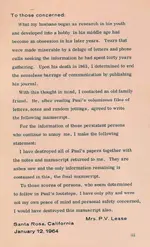
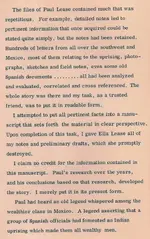

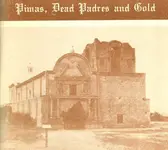
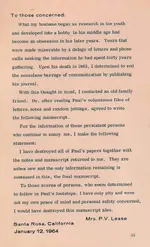
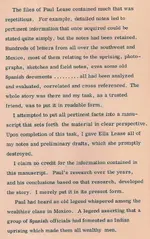
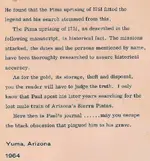
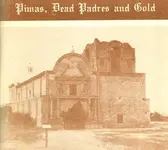
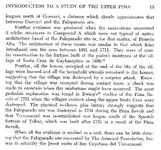
 What I wrote was: "Can I assume you don't consider it a "primary source" for your conclusions on Jesuit mining/treasure?"
What I wrote was: "Can I assume you don't consider it a "primary source" for your conclusions on Jesuit mining/treasure?"


 She does not think it justified, but I do as when focused on a particular aspect, as in that case the origin of the report of American prospectors hauling away slag to sell for the remaining precious metals content, has been dismissed as originating in treasure-hunting circles, t-mags etc but this is not the case.
She does not think it justified, but I do as when focused on a particular aspect, as in that case the origin of the report of American prospectors hauling away slag to sell for the remaining precious metals content, has been dismissed as originating in treasure-hunting circles, t-mags etc but this is not the case. 
